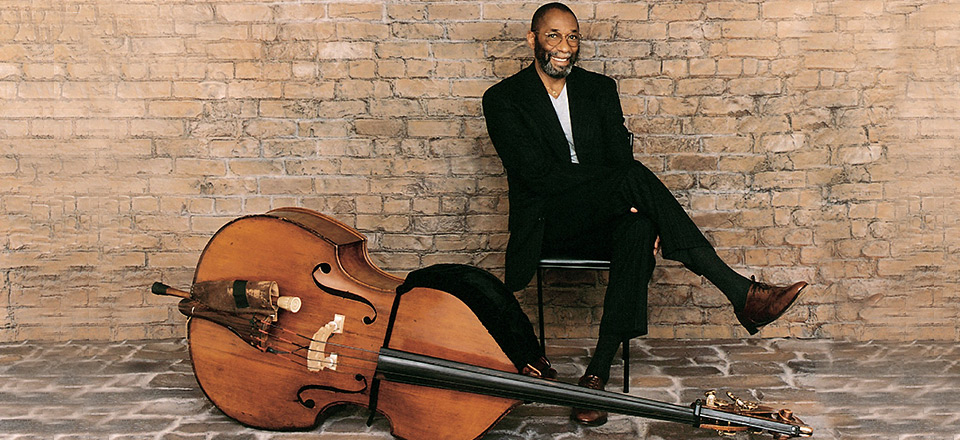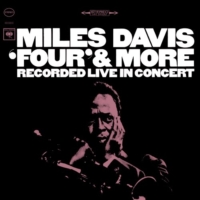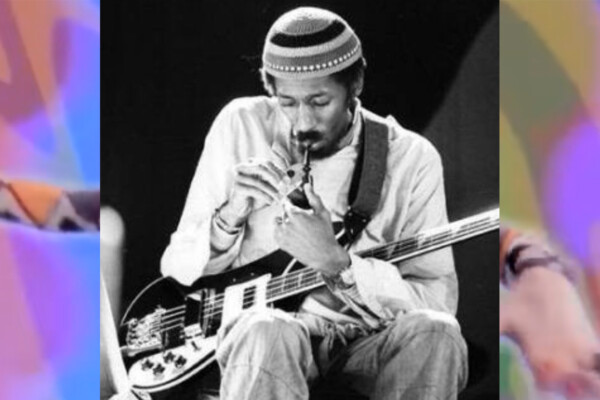Bass Players To Know: Ron Carter

While the name Ron Carter makes a frequent appearance on No Treble, I decided it was time to officially add him to the list of Bass Players To Know. Inspired by an NPR “Fresh Air” interview of Antonio Carlos Jobim, it was clear to me that Carter’s playing can be heard all across the jazz spectrum, from the early days of Bossa Nova to the experimental and modal compositions of Miles Davis and Herbie Hancock. His career as a bassist is well rounded in the best of ways—he has enjoyed success as a sideman, artist, and composer, with countless studio and live recordings spanning over seven decades. Appearing alongside jazz greats such as George Benson, Freddie Hubbard, and Wynton Marsalis, he has also made his mark on the popular music world, providing artists like Paul Simon and Roberta Flack with his sophisticated and soulful upright playing. Carter is undoubtedly a bass player to know with a catalog worth revisiting time and time again.
So Who Is Ron Carter?
Born in Ferndale, Michigan, Carter spent most of his teenage years in Detroit; he initially picked up the cello at age ten and later switched to upright bass. With classical training and a bachelor’s degree from Eastman School of Music, he moved to New York in 1961 to attend Manhattan School of Music. Within a few short years, he was able to establish his reputation as a bassist in New York and recorded with Chico Hamilton, Eric Dolphy, and Wes Montgomery.
By the mid-1960’s, he was at the cutting edge of the jazz world, largely due to his association with Miles Davis and the other members of his ensemble. In addition to his presence on most of Davis’ live and studio recordings from 1963 on, he can also be heard on Herbie Hancock’s Maiden Voyage, Wayne Shorter’s Speak No Evil, and Freddie Hubbard’s Red Clay, among many others. Throughout the 1970s, he continued to diversify his musical repertoire with more frequent solo projects, an acclaimed duo with Jim Hall, and with artists including Quincy Jones, Sonny Rollins, Astrud Gilberto, Stan Getz, Grover Washington, Bill Evans, and McCoy Tyner. Later in the decade, his attention also went toward the piccolo bass, highlighting his ability as a composer and soloist in a higher register.
From the 1960’s until the present day, he has remained an in-demand double bassist for live and session dates around New York City. In addition to his work in the jazz world, he has made appearances on numerous pop and R&B records, providing tasteful playing to records by Erykah Badu, Bette Midler, Billy Joel, and Aretha Franklin. Carter has also received multiple Grammy awards and is known as the most recorded jazz bassist with over 2,200 recording credits.
Let’s Talk Style
What makes Carter so unique is the fact that describing his style is more comparable to describing the entire jazz genre—it includes a grandiose and diverse spectrum of sophisticated music that has evolved over the past several decades. Carter has been at the forefront of various jazz movements, from bebop to bossa nova, straight-ahead to experimental. If that weren’t enough, he has thrived in virtually every form of ensemble playing from conservation-driven duos to quartets to big bands. He has played the bass lines that all students of jazz have to learn and does so with impeccable tone, technique, and temperament.
While it’s impossible to highlight every aspect of his playing, I’d prefer to draw attention to his general musicality, adaptability, and respect for form. He is inherently rhythmic as he gracefully walks quarter notes at any tempo, digs in with gusto to specific grooves, and manages to provide an appropriate backdrop to fluid, time-bending open forms. Furthermore, he easily toggles between an ensemble player and a soloist; he adheres to the lower register to accompany others and is equally adept at playing up the neck to exercise his creativity as a featured player. He is constantly listening and reacting to his fellow musicians; he provides the perfect pedestal for a soloist yet easily sneaks in musical quips during moments of call-and-response. And finally, he is technically diverse when it comes to agility, affectations such as vibrato and glissando, and refined intonation.
Where Can I Hear Him?
“Wave” (Antonio Carlos Jobim: Wave)
 Carter contributes a simple, yet undeniably classic root-fifth bass line to this record, setting the standard for the Bossa Nova groove and sneaking in delicate glissandos and chromatic fills. He plays with an air of effortlessness, contributing to the “hip” and leisurely vibe of what would turn into a popular jazz phenomenon.
Carter contributes a simple, yet undeniably classic root-fifth bass line to this record, setting the standard for the Bossa Nova groove and sneaking in delicate glissandos and chromatic fills. He plays with an air of effortlessness, contributing to the “hip” and leisurely vibe of what would turn into a popular jazz phenomenon.
Listen: iTunes | Amazon MP3
“So What” (Miles Davis: “Four” & More)
 This version of the bass-centric standard features Carter with a unique interpretation of the main theme, complimented by sparse piano chords by Herbie Hancock. He launches into a brisk walking pace to back up Davis’ solo, swiftly moving up and down the neck while keeping up with Tony Williams’ aggressive swing on the ride cymbal. Providing a sturdy harmonic backbone to the band, he clearly outlines the key and modulation with chromatic movement, arpeggios, and scalar movement.
This version of the bass-centric standard features Carter with a unique interpretation of the main theme, complimented by sparse piano chords by Herbie Hancock. He launches into a brisk walking pace to back up Davis’ solo, swiftly moving up and down the neck while keeping up with Tony Williams’ aggressive swing on the ride cymbal. Providing a sturdy harmonic backbone to the band, he clearly outlines the key and modulation with chromatic movement, arpeggios, and scalar movement.
Listen: iTunes | Amazon MP3
“Receipt, Please” (Jim Hall and Ron Carter: Alone Together)
 This original composition by Carter features the players executing the head with precision and groove before embarking on solos. It is a fantastic example of musical conversation, demonstrating the kind of insightful and responsive dialogue that is possible when two fantastic instrumentalists perform together. Carter and Hall compliment each other perfectly, both taking on the harmonic and rhythmic responsibilities while the other solos and playing to the strengths of their respective registers.
This original composition by Carter features the players executing the head with precision and groove before embarking on solos. It is a fantastic example of musical conversation, demonstrating the kind of insightful and responsive dialogue that is possible when two fantastic instrumentalists perform together. Carter and Hall compliment each other perfectly, both taking on the harmonic and rhythmic responsibilities while the other solos and playing to the strengths of their respective registers.
Listen: iTunes | Amazon MP3
How about you? What’s your favorite tune or album with Ron Carter? Please share with us in the comments.
Ryan Madora is a professional bass player, author, and educator living in Nashville, TN. In addition to touring and session work, she teaches private lessons and masterclasses to students of all levels. Visit her website to learn more!




I fall in love with Mr. Carter, and his upright mastery, each time I view Ahmad Jamal’s “Poinciana” performance in Paris. He sets a grove that causes me to dance immediately and to weep joyously while doing so. Thank you!?